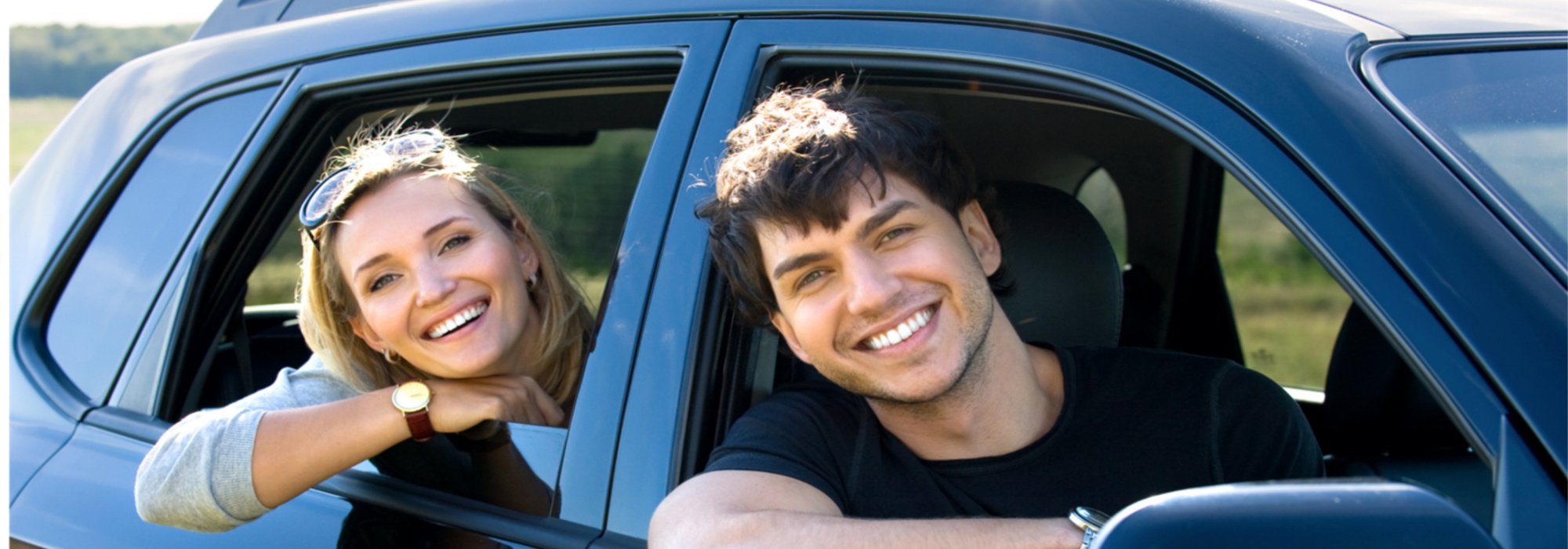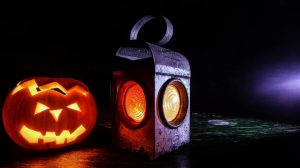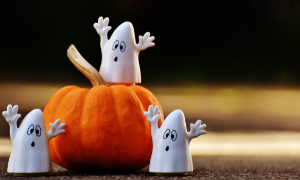Halloween is thought to have originated in Ireland & Scotland when the Celtic people celebrated the Ancient Festival of Samhain. The Pagan Festival of Samhain (summer’s end) was held around the end of October to mark the end of the summer months, the harvest and the beginning of winter.
Halloween’s Celtic Origins
What we celebrate today as Halloween traces its origins back roughly 2,000 years to the ancient Celtic festival of Samhain.
Samhain was one of four seasonal festivals observed by the Celts in Ireland, Scotland, and other parts of northern Europe. It marked the end of the summer, the completion of the harvest and the transition into winter.
According to myth, on the night of Samhain, the veil between the world of the living and the ‘otherworld’ were at their weakest, and sídhe (fairy mounds and portals to the otherworld) were open. This meant that spirits of the dead and other supernatural beings were able to cross over into our world.
To ward off evil spirits, communities gathered together to remember the dead, including saints (hallows) and martyrs. A family’s ancestors were honoured and invited to come back home, while harmful evil spirits were warded off. Bonfires were lit as their flames and ashes were deemed to have protective powers to ward off any evil spirits.
Feasts were held, and places were often set at the table for deceased ancestors who might visit. People also wore costumes and disguises to confuse spirits and protect them from harm.
This is likely where the tradition of trick or treating in costume (disguise) began, as people would go from house to house reciting songs or verses in exchange for food, and if the household donated food they could expect good fortune in return.
The traditional lantern used by the “guisers” to light their way as they were going from house to house, was a carved out turnip with a candle in it. Often the turnip would be hollowed out with grotesque faces, which was also thought to represent the spirits that passed through from the otherworld.
Halloween Today
Today’s Halloween is thought to have been influenced by Christian practices. In the eight century Pope Gregory IV officially named 1st November as All Saints Day. This was conceived as a way to honour all Cristian saints and martyrs, but was widely seen as a way to turn a pagan holiday into a Christian one.
It was a Christian tradition to hold a vigil the night before and this was called Hallow’s eve. It is thought that the Scottish later named it Hallow ‘een.
Later, the church added All Souls Day to honour the dead. During these times, people would go door to door offering to pray for the souls of deceased relatives and in return they would be given small pastries called soul cakes. This practice, known as souling, combined with Celtic guising, created a strong foundation for modern trick or treating.
Halloween remained a Celtic and Christian tradition for centuries and was celebrated by the Irish, Scottish and Welsh Celts. It is thought that these Celtic Immigrants brought their Halloween tradition with them when they landed in the United States of America in the 1700’s and 1800’s.
Here, these traditions changed and evolved and Halloween is now a huge event all over the United States, leading to Halloween’s big influence on pop culture and paving the way for some of the best horror films ever made.
Modern Halloween Traditions
One of the most significant changes to Halloween was the tradition of carving lanterns.
In Ireland, people had traditionally carved faces into turnips to ward off wandering spirits. This practice was tied to an Irish legend of a man named “Stingy Jack”, who was doomed to walk the earth with only a burning coal inside a hollowed-out turnip. This gave rise to the name “Jack-o’-Lantern”.
When these traditions made their way to America, pumpkins, which were more widely available and easier to carve, were used instead of turnips to make the Lanterns – something which has crossed back over to Europe (Imagine trying to hollow out a turnip!).
That wasn’t the only change. The Celtic tradition of guising and the Christian tradition of souling merged to become what we know today as trick or treating. By the early 20th century, children and teenagers in America would dress in costumes and go door to door, often playing pranks on the homeowners. This eventually became the child-friendly tradition that we know today.
Today, Halloween is a child centred, family and community based event, with less of the evil sinister connotations of the olden days, and is characterised by child friendly games, activities, dressing up in costumes, trick or treating, apple bobbing, making sticky toffee apples, attending supervised bonfires and firework displays.
In Ireland, some of us who grew up in the seventies and eighties might remember having colcannon for dinner (curly kale and mashed potato) with a coin hidden in it, (I know, how unhealthy!) or hoping to find the ring in the Barm Brack.
Halloween Traditions Around The World
While the Irish and American celebrations are well known, many cultures have their own unique ways of honouring the dead and marking the season.
In Mexico, and other parts of Latin America, people celebrate Día de Muertos, or the Day of the Dead from October 31st to November 2nd. This is a celebration to welcome the spirits of deceased loved ones. Families create ofrendas (Offerings) to honour departed family members and decorate altars with bright yellow marigold flowers, photos of the departed, and the departed’s favourite foods or drinks to encourage visits from the otherworld.
In the Philippines, they have a traditional souling practice called Pangangaluluwa. Observed on All Hallows Eve, it involves groups of people going from house to house, singing songs and pretending to be lost souls from purgatory. In return, homeowners would give them gifts or food.
In Slavic countries like Poland, they celebrate Dziady, or Forefathers’ Eve. A feast of remembrance where families would leave food and drink on their tables or on graves for the souls of relatives. They would also light bonfires to help guide the spirits home.
How to Have a Safe and Spooky Halloween
While Halloween is one of the most exciting nights of the year, it still comes with a lot of risks and dangers.
Roads and streets will be much busier with excited children (and adults!) in costumes. So drivers need to stay alert and be extra vigilant. While trick-or-treaters and other pedestrians should do their best to stay visible by wearing reflective clothing or stick to well-lit streets. For more tips and advice, you can read our guide on how to stay safe on the road this Halloween.
When trick-or-treaters come to your door, you are responsible for their safety on your property. This is a key part of your home insurance’s public liability cover. To prevent trips and falls, make sure your walkway and steps are well-lit and clear of any wet leaves, decorations, or extension cords. Fire safety is also crucial. Consider using battery-operated LED candles in pumpkins to avoid the risk of a costume catching fire. You can find more essential advice in our tips for parents and homeowners on protecting against Halloween hazards.
Parents and homeowners should also take precautions against potential tricks and dangers this Halloween.
Make sure that children’s costumes are flame-resistant and that they are visible to drivers, and be sure to inspect any treats that your little monsters bring home. For any trick-or-treaters visiting your home, keep footpaths and driveways well-lit and clear of any hazards to prevent trips and falls.
Opting for battery-powered or led lights instead of candles can also reduce your risk of fire. And remember that while fireworks seem exciting, they pose significant risks and are tightly controlled and restricted in Ireland. The noise from fireworks can be also be stressful for pets so keep them inside and away from the front dor.
You should also secure your property against vandalism by keeping your home well-lit, trimming overgrown bushes and parking cars in a garage or secure area if possible. For more tips, check out our Halloween safety tips for parents and homeowners.
Stay safe and have a very Happy Halloween.
Save On Young Driver Car Insurance?
At KennCo, we understand that it can be hard for young drivers to get their first car on the road. That’s why we offer low-cost and reliable young driver car insurance.
Get a Secure Quote Today
Low-Cost Home Insurance You Can Rely On
KennCo home insurance policies are packed with many great extra features to not only give you peace of mind, but great value too. All of our policies include loss of keys cover up to €500 and freezer damage cover up to €750 at no extra cost. You’ll also receive a discount if you have extra security measures in place such as a house alarm.
Get a Secure Quote Today


